Spanje je potrebno za preživetje in zdravje, čemu je potrebno ali kako natančno ljudem koristi, pa ne razumemo povsem. Potrebe posameznikov po spanju so zelo različne; nekateri zdravi odrasli potrebujejo le 4 ure, drugi pa kar 9 ur spanja dnevno. Večina ljudi spi ponoči, marsikdo pa mora zaradi delovnega urnika spati podnevi, kar velikokrat pripelje do motenj spanja. Večina motenj spanja je pogostih.
SPANJE in MOTNJE SPANJA: Splošno | Povprečne dnevne potrebe po spanju | Stadiji spalnega kroga | Nespečnost | Uspavala | Hipersomnija | Narkolepsija | Sindromi nočne apneje | Parasomnije | Vprašanja in odgovori | Viri/reference
Kako dolgo človek spi in kako spočitega se počuti, ko se zbudi, je odvisno od številnih dejavnikov, npr. od razburjenja ali čustvene stiske, pa tudi od zdravil, ki jih uživa; nekatera zdravila namreč naredijo človeka zaspanega, druga pa otežijo spanje.
Celo nekatere sestavine hrane ali aditivi, npr. kofein, močne začimbe in mononatrijev glutamat, lahko vplivajo na spanje.
Slika: Večina motenj spanja je pogostih.
.jpg)
Človek težko zaspi in ne more dalj časa spati brez prekinitev, spi prekratek čas ali kaže nenormalne vrste vedenja v spanju, npr. nočne more ali mesečnost.
Povprečne dnevne potrebe po spanju:
| Starost | Celotno število ur | Spanje REM (odstotek vsega spanja) | Stadij 4 spanja (odstotek vsega spanja) |
| novorojenček | 13 do 17 | 50 % | 25% |
| 2 leti | 9 do 13 | 30 do 35 % | 25% |
| 10 let | 10 do 11 | 25% | 25 do 30 % |
| 16 do 65 let | 6 do 9 | 25% | 25% |
Spanje ni enolično stanje; ima več različnih stadijev, skozi katere normalno vsako noč petkrat ali šestkrat zakroži. Spanje napreduje iz stadija 1 (najlahnejša raven, v kateri spečega z lahkoto zbudimo) do stadija 4 (najgloblja raven, v kateri je spečega težko zbuditi). V stadiju 4 so mišice sproščene, krvni tlak je najnižji, srčni utrip in frekvenca dihanja pa najpočasnejša.
Poleg teh štirih stadijev je še oblika spanja, ki jo spremljajo hitri očesni gibi (REM) in vedenjska dejavnost. Med spanjem REM je električna dejavnost v možganih nenavadno velika, včasih je podobna kot v budnosti. Očesne gibe in spremembe možganskih valov, ki pri tem nastajajo, lahko električno zabeležimo na elektroencefalogramu (EEG).
Slika: Spalna apneja je veliko redkejša pri ženskah.
.jpg)
V spanju REM se frekvenca in globina dihanja povečata, mišice pa so zelo sproščene - celo bolj kot na najglobljih ravneh spanja ne-REM. Sanjamo predvsem v obdobju spanja REM in stadija 3, medtem ko se govorjenje v spanju, nočne more in hoja v spanju najpogosteje pojavljajo v stadijih 3 in 4. Pri normalnem nočnem spanju spanje REM tesno sledi vsakemu od petih ali šestih ciklov štiristopenjskega spanja ne-REM, lahko pa se pojavi v kateremkoli od stadijev.
Stadiji spalnega kroga
Izraz "stadiji spalnega kroga" se nanaša na faze spanja, skozi katere gremo med nočnim spanjem. Obstajajo različne teorije o tem, kako je spanje organizirano, vendar se večina raziskav strinja, da se spanje deli na več faz.
Najpogostejši model vključuje naslednje faze:
- Faza budnosti: to je stanje, ko smo popolnoma zavestni in dejavni. Faza budnosti predstavlja začetek spanca.
- Faza uspavanja (spanja z neRIMskimi gibi oči): to je faza, ko se začnemo počasi sproščati in pripravljati na spanje. Aktivnost možganov se začne umirjati, mišice se sprostijo in postanemo manj občutljivi na zunanje dražljaje.
- Faza NREM 1 (lahki spanec): v tej fazi je spanje zelo lahko prekinjeno. Aktivnost možganov se upočasni, mišice se še naprej sproščajo, srčni utrip in dihanje pa se upočasnita.
- Faza NREM 2 (globlji spanec): to je faza, v kateri se pravzaprav zavemo, da smo zaspali. Pojavijo se sporadični gibi oči in možgani obdelujejo informacije iz prejšnjega dne.
- Faza NREM 3 (globoki spanec): ta faza je znana tudi kot počasen val spanja. Je najgloblja faza spanja, med katero je težko zbuditi. V tej fazi se ponovno vzpostavlja fizična energija, tkiva pa se obnavljajo.
- Faza REM (rapidno gibajoči se oči): to je faza, ki jo imenujemo tudi paradoksno spanje. V tej fazi so možgani zelo aktivni, medtem ko so mišice popolnoma sproščene. Sanje so najpogostejše in najživahnejše v tej fazi. Traja le kratek čas na začetku spanca, vendar se s časom podaljšuje skozi noč.
Te faze se ponavljajo v ciklih skozi noč, pri čemer se razmerje med fazami spreminja. Na začetku noči je večina spanja v globokem spanju (NREM 3), medtem ko je v drugi polovici noči več REM spanja. Pomembno je, da skozi noč prehajamo skozi vse te faze, saj ima vsaka svojo vlogo pri fizičnem in kognitivnem okrevanju.
Video vsebina: Staranje in težave s spanjem.

- nespečnost,
- zasvojenost z uspavali,
- hipersomnija,
- hudo smrčanje ali dušenje,
- nočne more,
- po opisu prič nenormalno spanje.
Začetna ocena v laboratoriju za spanje lahko zajema:
- anamnezo spanja, pogosto skupaj z dnevnikom spanja,
- splošno zdravstveno anamnezo,
- telesno preiskavo,
- krvne preiskave,
- laboratorijsko testiranje spanja.
Dva primera laboratorijskih testov spanja sta nočna polisomnografija in test latence večkratnega spanja. Pri nočni polisomnografiji človek prebije noč v laboratoriju za spanje s pripetimi elektrodami, s katerimi mu merijo stadije spanja in druge fiziološke parametre.
S to preiskavo ocenjujemo nočno apnejo ali motnje gibanja v spanju. Pri testu latence večkratnega spanja človek v laboratoriju za spanje prebije dan in občasno zadremlje. S to preiskavo ocenjujemo zaspanost podnevi, posebno pri narkolepsiji.
Nespečnost
Človek z nespečnostjo težko zaspi, ne more dalj časa spati brez prekinitev ali pa ima motnje spanja, zaradi katerih ima, potem ko se zbudi, občutek, da je spal premalo časa. Nespečnost ni bolezen - je simptom, ki ima veliko različnih vzrokov, med drugim čustvene motnje in telesne bolezni. Tako mlajšim kot starejšim se večkrat dogaja, da le stežka zaspijo; to se pogosto zgodi pri čustvenih motnjah, npr. pri anksioznosti ali depresiji.
Slika: Včasih je nespečnost lahko stranski učinek zdravila.
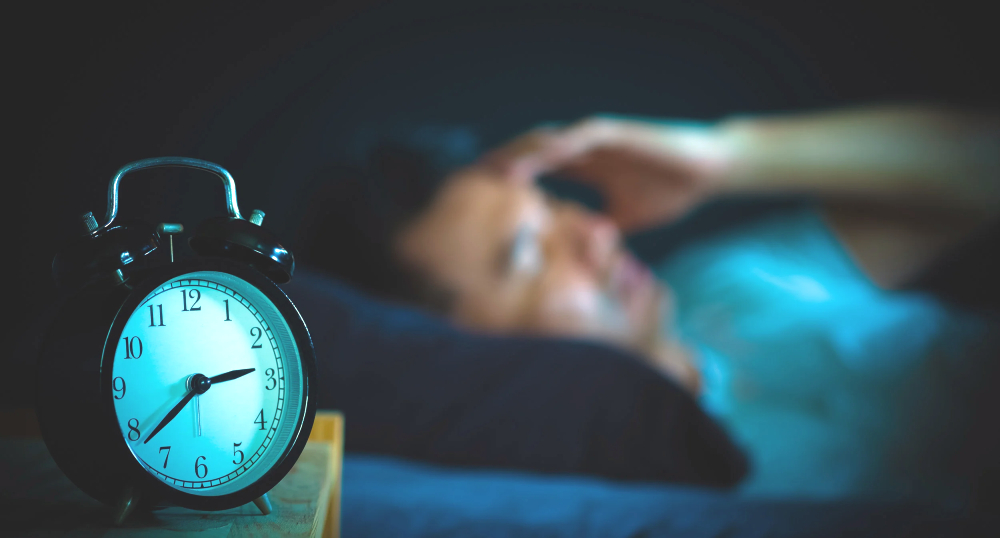
Pri starejših je pogostejši vzorec zgodnjega jutranjega zbujanja. Nekateri ljudje normalno zaspijo, čez nekaj ur pa se zbudijo in ne morejo zlahka spet zaspati. Včasih nihajo med budnostjo in nemirnim, nezadovoljivim spanjem. Zgodnje jutranje zbujanje je lahko v vsaki starosti znak depresije.
Ljudje s porušenim vzorcem spanja lahko doživljajo obrat ritma spanja: zaspijo ob neustreznem času, ko bi morali spati, pa ne morejo. Ti obrati pogosto nastanejo kot posledica potovanja med časovnimi pasovi (posebno pri potovanju z vzhoda na zahod), dela v nerednih nočnih izmenah, pogostnih sprememb delovnega časa ali pretiranega pitja alkohola. Včasih so stranski učinek kakega zdravila. Tudi okvara vgrajene možganske ure (npr. zaradi encefalitisa, možganske kapi ali Alzheimerjeve bolezni) lahko poruši vzorce spanja.
DiagnozaZa postavitev diagnoze nespečnosti zdravnik oceni vzorec spanja osebe, uživanje zdravil, alkohola in mamil, stopnjo duševnega stresa, medicinsko anamnezo ter raven telesne dejavnosti. Zdravniki lahko razvrščajo nespečnost kot primarno nespečnost, ki je dolgotrajno stanje brez jasne povezave s kakim stresom ali dogodkom v življenju, ali sekundarno nespečnost, ki jo povzročajo bolečine, anksioznost, zdravila, depresija ali stres.
Uspavala: ne gre jih jemati zlahka
Hipnotiki (sedativi, mali trankvilizatorji, anksiolitiki) sodijo med zdravila, ki jih zdravniki največkrat predpisujejo. Večinoma so varni, vsi pa lahko izgubijo učinkovitost, ko se človek nanje navadi. Ob prekinitvi jemanja lahko povzročijo tudi odtegnitvene simptome.
Če človek hipnotik jemlje več kot nekaj dni, nato pa ga neha jemati, se lahko izvirna težava s spanjem še poslabša (»preobratna nespečnost«), anksioznost pa se poveča. Zdravniki priporočajo počasno zmanjševanje odmerka; popolna ukinitev jemanja zdravila lahko traja več tednov.
Video vsebina: Naravni pripomočki za spanje – katero zdravilo je najučinkovitejše?

Večine hipnotikov ne moremo kupiti brez zdravniškega recepta, ker utegnejo povzročati navajenost ali zasvojenost, možen pa je tudi prevelik odmerek. Ta zdravila so posebno tvegana pri starejših in pri ljudeh, ki imajo težave z dihanjem (hipnotiki namreč velikokrat zavirajo dejavnost možganskih predelov, ki nadzirajo dihanje). Zmanjšujejo tudi budnost podnevi, tako da postane vožnja avtomobila ali upravljanje strojev nevarno.
Hipnotiki so posebno nevarni, če jih uživamo hkrati z alkoholom, drugimi hipnotiki, narkotiki, antihistaminiki in antidepresivi. Vsa ta zdravila povzročajo zaspanost in lahko zavirajo dihanje, zato so kombinirani učinki nevarnejši.
Najpogostejši in najvarnejši hipnotiki so benzodiazepini. Ker ne zmanjšujejo celotne količine spanja REM, ne zmanjšujejo sanjanja. Nekateri benzodiazepini ostanejo v telesu dlje kot drugi. Pri starejših ljudeh, ki ne morejo presnavljati in izločati zdravil tako dobro kot mlajši, je več možnosti, da se pojavijo zaspanost podnevi, zabrisan govor in nagnjenost k padcem. Zato zdravniki poskušajo čim manj predpisovati dolgotrajno delujoče benzodiazepine, kakršni so flurazepam, klordiazepoksid in diazepam.
Slika: Uspavalne tablete lahko povzročijo nestabilnost, omotico in pozabljivost.
.jpg)
Barbiturati, nekoč najpogosteje uporabljani hipnotiki, in meprobamat niso tako varni kot benzodiazepini. Kloralhidrat je razmeroma varen, a se veliko redkeje uporablja kot benzodiazepini. Nekateri antidepresivi, npr. amitriptilin, lahko lajšajo nespečnost, povezano z depresijo, ali zbujanje zgodaj zjutraj, ki ga povzročajo napadi panike, vendar se lahko pojavijo nezaželeni stranski učinki, posebno pri starejših.
Difenhidramin in dimenhidrinat lahko lajšata blage ali občasne težave v zvezi s spanjem, vendar se ne uporabljata primarno kot pomirjevali in imata možne nezaželene stranske učinke, posebno pri starejših.
ZdravljenjeZdravljenje nespečnosti je odvisno od njenega vzroka in od tega, kako huda je. Starejši ljudje, ki doživljajo spremembe spanja, povezane s starostjo, zdravljenja navadno ne potrebujejo, ker so te spremembe normalne. Ker se dolžina vsakodnevnega spanja s staranjem navadno skrajšuje, starim ljudem pogosto pomaga, če gredo pozneje v posteljo ali če prej vstanejo.
Ljudem z nespečnostjo pomaga, če so zadnjo uro pred spanjem mirni in sproščeni in če je okolje v spalnici ugodno za spanje. Potrebni so polmrak, kar najmanj hrupa in prijetna sobna temperatura.
Če nespečnost povzroča čustveni stres, je koristnejše zdravljenje za ublažitev stresa kot jemanje uspaval. Kadar se nespečnost pojavlja skupaj z depresijo, naj depresijo temeljito razišče in zdravi zdravnik. Nekatera zdravila proti depresiji lahko izboljšajo spanje, ker delujejo pomirjevalno. Kadar motnje spanja ovirajo človeka pri vsakdanjih opravilih in povzročajo slabo počutje, utegne pomagati občasno uživanje zdravil, ki pospešujejo spanje (pomirjevala, uspavala).
Hipersomnija
Hipersomnija je podaljšanje obdobja vsakdanjega spanja za približno eno četrtino. Hipersomnija je redkejša kot nespečnost in je simptom, ki pogosto kaže na možnost resne bolezni. Začasna hipersomnija se lahko pojavlja pri zdravih ljudeh za nekaj noči ali dni po obdobju daljše prikrajšanosti spanja ali neobičajnem telesnem naporu.
Če se je pretirana zaspanost pojavila nenadoma, bo zdravnik povprašal o bolnikovem razpoloženju, seznanjenosti z nedavnimi dogodki in morebitnih zdravilih, ki jih oseba utegne jemati. Zdravnik bo pregledal srce, pljuča in predlagal laboratorijske preiskave.
Slika: Hipersomnija je redkejša od nespečnosti.
.jpg)
Hipersomnijo, ki se je pojavila pred kratkim in je ni moč razložiti z boleznijo ali pretiranim uživanjem zdravil, utegne povzročati psihiatrična bolezen (npr. depresiia) ali nevrološka težava (npr. encefalitis, meningitis ali znotrajlobanjski tumor). Nevrološki pregled lahko pokaže depresijo, spominske motnje ali nenormalne nevrološke znake. Osebo, ki ima znake nevrološke težave, zdravnik napoti na slikanje z računalniško tomografijo (CT) ali magnetno resonanco (MRS) ter jo pošlje k nevrologu.
Narkolepsija
Za narkolepsijo, ki je neobičajna motnja spanja, so značilni ponavljajoči se neobvladljivi napadi spanja v obdobju, ko je človek sicer normalno buden, pa tudi katapleksija, ohromelost v snu in halucinacije. Vzroka narkolepsije ne poznamo, se pa ta bolezen pojavlja rodbinsko, kar kaže na dednostno predispozicijo. Narkolepsija sicer nima resnih zdravstvenih posledic, lahko pa bolnika in okolico zelo prestraši in poveča nevarnost nezgod.
Simptomi
Oseba z narkolepsijo lahko v trenutku ohromi, ne da bi izgubila zavest (temu stanju pravimo katapleksija), v odgovor na nenadno čustveno reakcijo, npr. jezo, strah, veselje, smeh ali presenečenje. Človek lahko postane mlahav, lahko spusti nekaj, kar drži v roki, ali pade na tla.
Video vsebina: Kaj je narkolepsija?

Možna so tudi občasna obdobja ohromitve v snu; prav takrat, ko človek zadrema, ali takoj po tistem, ko se zbudi, doživi občutek, da se hoče premakniti, pa se ne more. To doživetje je lahko grozljivo. Žive halucinacije, med katerimi človek vidi ali sliši stvari, ki jih ni, se lahko pojavljajo na začetku spanja, redkeje pa pri prebujanju. Halucinacije so podobne kot tiste v normalnih sanjah, a so intenzivnejše. Le okrog 10 odstotkov oseb z narkolepsijo ima vse te simptome; večina jih ima le nekaj.
Diagnoza
Medtem ko diagnoza navadno temelji na simptomih, ni nujno, da podobni simptomi pomenijo, da ima človek narkolepsijo. Katapleksija, ohromitev v snu in halucinacije so pogoste pri majhnih otrocih in se včasih pojavljajo pri sicer zdravih odraslih. Če zdravnik ni prepričan o diagnozi, lahko bolnika pošlje v laboratorij za proučevanje spanja.
Elektro-encefalogram (EEG) - posnetek električne aktivnosti možganov - utegne pokazati, da se vzorci spanja vrste REM pojavljajo takrat, ko človek zadrema, kar je značilno za narkolepsijo. V možganih niso opazili nobene strukturne spremembe, v krvnih preiskavah pa nobene nenormalnosti.
Zdravljenje
Spodbujevala, npr. efedrin, amfetamin, dekstroamfetamin in metilfenidat, lahko pomagajo lajšati narkolepsijo. Odmerek je treba prilagoditi, da se ne pojavijo stranski učinki.
Sindromi nočne apneje
Nočna apneja je skupina resnih motenj spanja, pri kateri speča oseba spet in spet neha dihati (apneja) za tako dolgo, da se zmanjša koncentracija kisika v krvi in v možganih in da se poveča koncentracija ogljikovega dioksida. Nočna apneja je lahko bodisi obstruktivna ali centralna. Obstruktivno nočno apnejo povzroča zapora v žrelu ali zgornjih dihalnih poteh.
Centralno nočno apnejo povzroča motnja v delovanju tistega dela možganov, ki nadzira dihanje. Včasih pri obstruktivni nočni apneji kombinacija dolgotrajne nizke koncentracije kisika in visoke koncentracije ogljikovega dioksida v krvi zmanjša občutljivost možganov za te nenormalnosti, kar težavi doda še element centralne apneje.
Slika: Nočna apneja je lahko bodisi obstruktivna ali centralna.
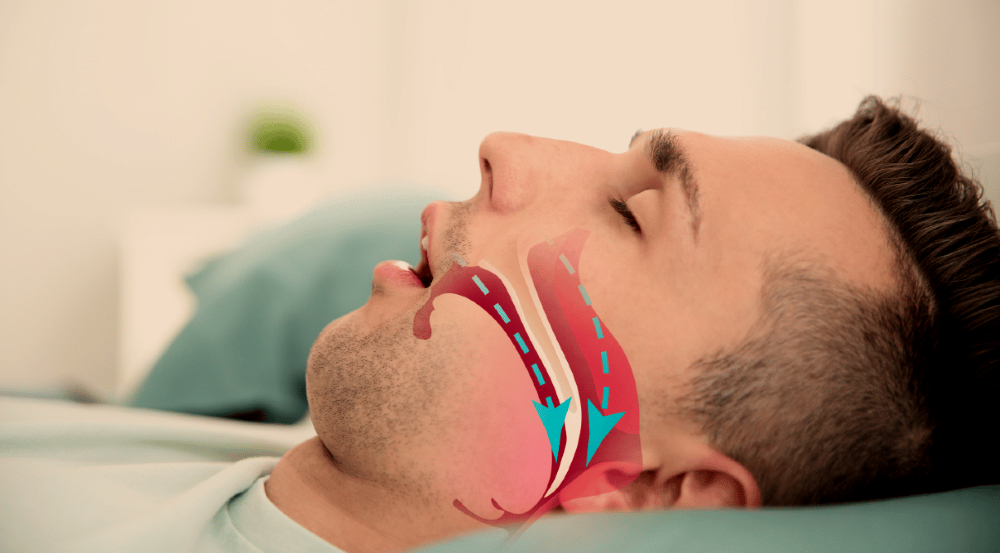
Obstruktivna nočna apneja se navadno pojavlja pri debelih moških, od katerih jih večina poskuša spati na hrbtu. Bolezen je veliko redkejša pri ženskah. Debelost, morda v kombinaciji s staranjem telesnih tkiv in z drugimi dejavniki, povzroči zožitev zgornjih dihalnih poti.
Kajenje, pretirano uživanje alkohola in pljučne bolezni, npr. emfizem, povečujejo nevarnost, da se bo razvila obstruktivna nočna apneja. Nagnjenost k nočni apneji - zoženo žrelo in zgornje dihalne poti - se lahko podeduje in se pojavi pri več družinskih članih.
Simptomi
Ker se simptomi pojavljajo v spanju, jih mora opisati nekdo, ki človeka opazuje, kadar spi. Najpogostejši simptom je smrčanje, povezano z napadi lovljenja sape, dušenja, obdobja občasnega prenehanja dihanja in obdobja nenadnega zbujanja. V težkih primerih imajo ljudje ponavljajoče se napade s spanjem povezanega obstruktivnega dušenja tako ponoči kot podnevi.
Prej ali slej začnejo ti napadi ovirati vsakdanje delo in povečujejo nevarnost zapletov. Dolgotrajna huda nočna apneja ima lahko za posledico glavobole, pretirano zaspanost podnevi, upočasnjeno duševno dejavnost ter prej ali slej popuščanje srca in pljučno in-suficienco, pri kateri pljuča ne morejo telesu priskrbeti zadostnih količin kisika in odstranjevati ogljikovega dioksida.
Diagnoza
V zgodnjih stadijih zdravnik pogosto postavi diagnozo nočne apneje s pomočjo podatkov, ki jih izve od osebe, ki z bolnikom spi in ki utegne opisati glasno smrčanje ali lovljenje sape in prestrašeno zbujanje iz spanja, povezano z dušenjem, ali pa čedalje hujšo utrujenost podnevi.
Zdravljenje
Prvi ukrepi za ljudi z obstruktivno nočno apnejo so prenehanje kajenja, odpoved pretiranemu uživanju alkohola in hujšanje. Ljudje ki močno smrčijo, in ljudje, ki se v spanju pogosto dušijo, naj ne jemljejo pomirjeval uspaval in drugih pomirjevalnih zdravil.
Ljudem s centralno nočno apnejo navadno pomaga priprava za umetno dihanje, ki jo uporabljajo v spanju. Pomembna je sprememba lege v spanju; ljudem, ki smrčijo, priporočamo, naj spijo na boku ali trebuhu.
Če takšni preprosti postopki ne odpravijo nočne apneje, lahko poskusimo s trajnim pozitivnim tlakom v dihalih, za katerega skrbi naprava, ki jo bolnik nosi kot kisikovo masko in ki dovaja skozi nos mešanico zraka in kisika. Takšna naprava skrbi za odprtost dihalnih poti in tako pripomore k rednemu dihanju. Večina ljudi, z izjemo alkoholikov, se hitro navadi na te naprave.
Video vsebina: Spalna apneja in nespečnost - Minka Gantar.

Redko je pri človeku s težko nočno apnejo potrebna traheostomija, kirurški poseg, s katerim naredimo trajno odprtino v sapniku skozi vrat. Včasih z drugimi kirurškimi posegi razširimo zgornje dihalne poti in olajšamo težave. So pa takšni skrajni ukrepi potrebni le izjemoma in jih navadno izvaja specialist.
Parasomnije
Parasomnije so žive sanje in telesne dejavnosti, ki se pojavljajo med spanjem. V spanju se lahko pojavlja zelo veliko nezavednih gibov, ki se jih človek večinoma ne spomni (ti gibi se pogosteje pojavljajo pri otrocih kot pri odraslih).
Skoraj pri vseh ljudeh se včasih, tik preden zaspijo, pojavljajo kratki, posamični, nehotni trzaji vsega telesa. Nekateri ljudje doživljajo tudi ohromitev v snu ali kratkotrajne halucinacije. V spanju ljudje normalno občasno trzajo s spodnjimi udi, pri odraslih se lahko pojavljajo divje škripanje z zobmi, občasni gibi in mora. Hoja v spanju (mesečnost), butanje z glavo, nočni strahovi in mora so pogostejši in zelo izčrpavajoči pri otrocih. Epileptični napadi se lahko pojavljajo pri ljudeh vseh starosti.
Sindrom nemirnih nog (akatizija) je razmeroma splošna motnja, ki se pogosto pojavlja, tik preden človek zaspi, zlasti pri ljudeh, starejših od 50 let. Posebno takrat, kadar so ljudje z akatizijo preobremenjeni, dobijo nejasne neprijetne občutke v spodnjih udih, skupaj s spontanimi, neobvladljivimi gibi spodnjih udov. Vzroka ne poznamo, se pa pri vsaj tretjini ljudi z omenjeno motnjo ta pojavlja rodbinsko. Akatizijo včasih lajšajo benzodiazepinska zdravila, ki jih bolnik vzame pred spanjem.
Nočna grozavost so grozljive epizode, med katerimi človek v spanju kriči, maha z udi in pogosto tudi hodi. Ti napadi se navadno pojavljajo v obdobjih spanja brez hitrih očesnih gibov. Pomaga lahko zdravljenje z benzodiazepini, npr. z diazepamom.
More so žive, grozljive sanje, ki se pojavljajo pri otrocih in pri odraslih. Sanjam sledi nenadno prebujenje. More se pojavljajo med spanjem REM in so pogostejše v obdobjih obremenitev, vročine ali prevelike utrujenosti ali pa po uživanju alkohola. Specifičnega zdravljenja ne poznamo.
Slika: More so žive, grozljive sanje, ki se pojavljajo pri otrocih in pri odraslih.
.jpeg)
Mesečnost (somnambulizem), ki je najpogostejša v poznem otroštvu in adolescenci, je polzavestna hoja, ki se je bolnik ne zaveda. Med hojo v spanju ljudje ne sanjajo - možganska aktivnost med hojo v spanju, čeprav ni normalna, dejansko kaže bolj na budno stanje kot na spanje. Mesečniki lahko kar naprej nekaj mrmrajo in se lahko zaletavajo v ovire, pri čemer se poškodujejo. Hoje v spanju se večinoma ne spominjajo.
Za to motnjo spanja ni specifičnega zdravljenja, lahko pa mesečnika nežno odpeljemo nazaj v posteljo. Včasih se nagnjenost k hoji v spanju zmanjša, če pustimo v spalnici ali predsobi luč. Nasilno zbujanje mesečnika lahko izzove jezno reakcijo in ga ne priporočamo. Ovire ali lomljive predmete na poti, po kateri bi utegnil iti mesečnik, moramo odstraniti, nizka okna pa naj bodo vedno zaprta in zaklenjena.
Vprašanja in odgovori
Kaj povzroča spalno ohromelost?
Nespečnost, moteni vzorci spanja – na primer zaradi izmenskega dela ali časovnega zamika, narkolepsija – dolgotrajno stanje, zaradi katerega oseba nenadoma zaspi, in/ali posttravmatska stresna motnja (PTSM)[1].
Kako pogosta je narkolepsija?
Incidenca narkolepsije je približno 1 od 2000 in večina raziskovalcev meni, da motnja ostaja nediagnosticirana ali napačno diagnosticirana pri mnogih prizadetih posameznikih[2].
Kako zdravimo insomnijo?
Zdravljenje nespečnosti je odvisno od njenega vzroka in od tega, kako huda je. Ljudem z nespečnostjo pomaga, če so zadnjo uro pred spanjem mirni in sproščeni in če je okolje v spalnici ugodno za spanje. Če nespečnost povzroča čustveni stres, je koristnejše zdravljenje za ublažitev stresa kot jemanje uspaval. Kadar se nespečnost pojavlja skupaj z depresijo, naj depresijo temeljito razišče in zdravi zdravnik.
Koliko ur spanca potrebujemo v povprečju na dan?
- novorojenček: 13 do 17 ur
- 2 leti: 9 do 13 ur
- 10 let: 10 do 11 ur
- 16 do 65 let: 6 do 9 ur
Kako varna so uspavala za zdravljenje nespečnosti?
Eno od glavnih tveganj uspaval je, da lahko postanete odvisni od njih. To pomeni, da uspavala sčasoma postanejo manj učinkovita ter brez njih ne morete dobro spati. Ko poskušate prenehati, se lahko začnete tudi slabo počutiti ali doživite hujšo nespečnost. Uspavalne tablete lahko povzročijo tudi nestabilnost, omotico in pozabljivost[3].
Ali se nočna apneja lahko pojavi nenadoma in brez razloga?
Zdravstvena stanja, kot so kongestivno srčno popuščanje, visok krvni tlak in sladkorna bolezen tipa 2 so nekatera stanja, ki lahko povečajo tveganje za obstruktivno apnejo v spanju. Tveganje lahko povečajo tudi sindrom policističnih jajčnikov, hormonske motnje, predhodna možganska kap in kronične pljučne bolezni, kot je astma[4].
Viri in reference
Veliki zdravstveni priročnik za domačo uporabo, Založba mladinska knjiga
- Sleep paralysis - https://www.nhs.uk
- Narcolepsy - https://rarediseases.org
- Safe use of sleeping pills - https://www.healthdirect.gov.au
- Sleep apnea - https://www.mayoclinic.org

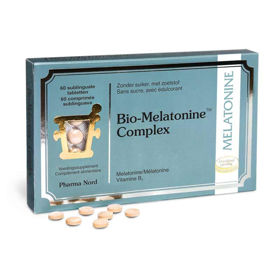

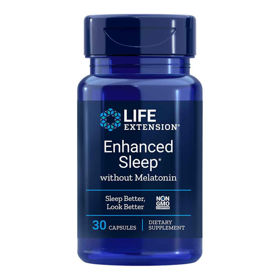
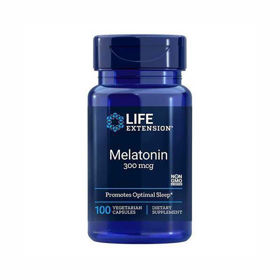


 Facebook
Facebook
 Instagram
Instagram
 info@moja-lekarna.com
info@moja-lekarna.com

